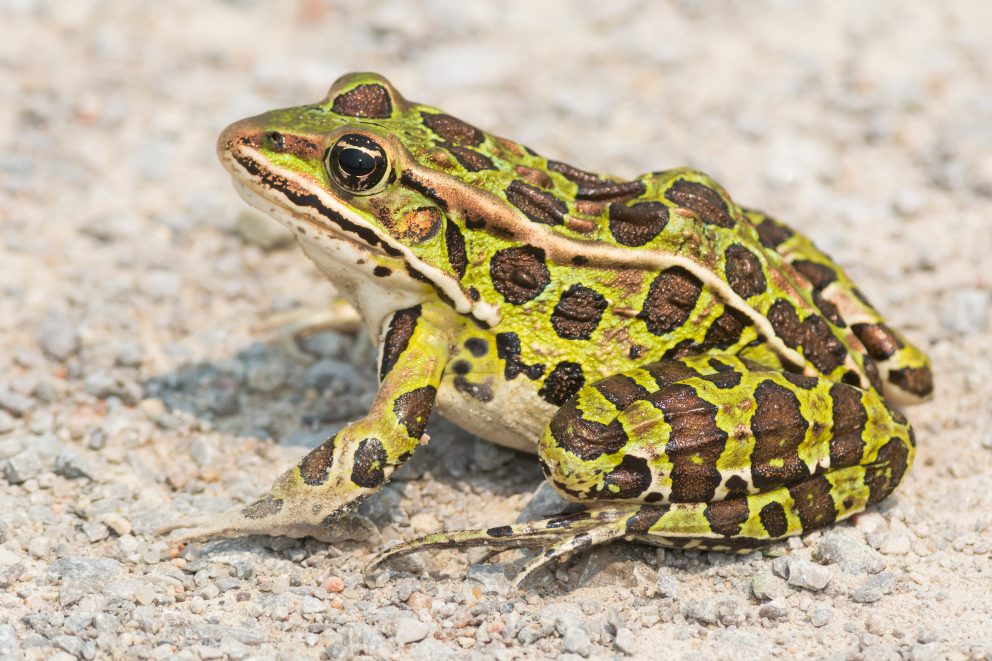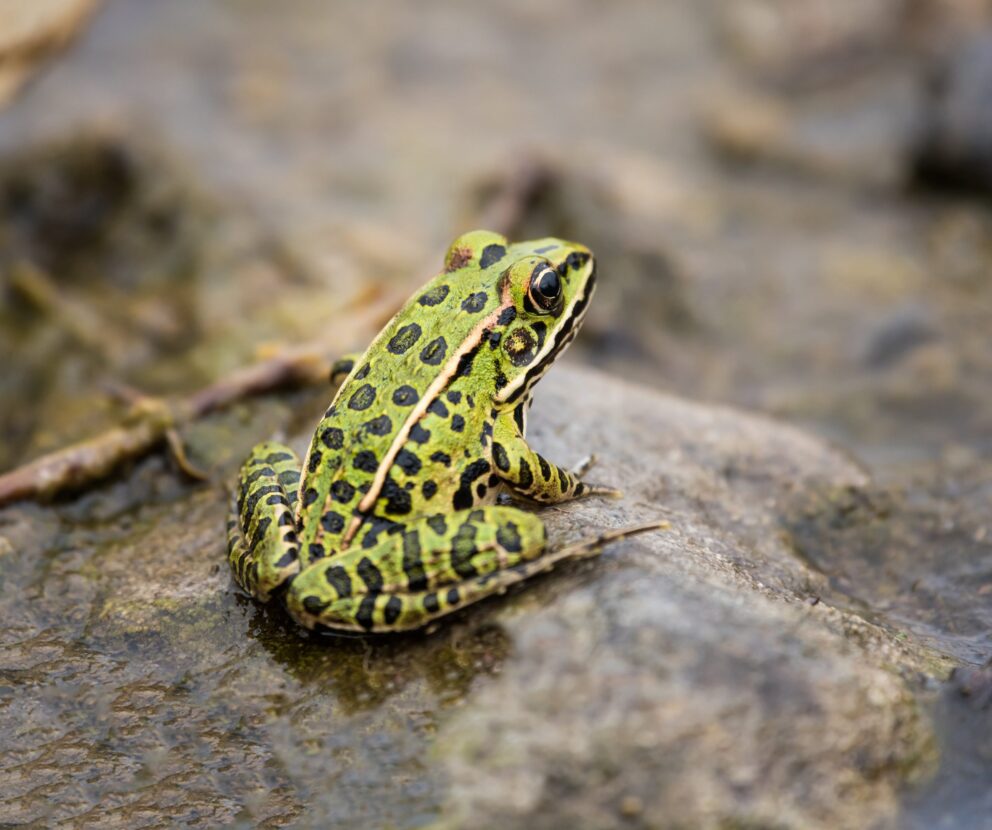- SCIENTIFIC NAME
- Lithobates pipiens
- CLASSIFICATION
- Amphibian
- LIFE SPAN
- 1-9 Years
- STATE CONSERVATION STATUS
-
- Priority Species
- State Protected
- FEDERAL CONSERVATION STATUS
- Least Concern
- GAME STATUS
- Non-Game
- Washoe
- Humboldt
- Pershing
- Churchill
- Mineral
- Lyon
- Douglas
- Carson City
- Storey
- Elko
- Lander
- Eureka
- White Pine
- Esmeralda
- Nye
- Lincoln
- Clark
Habitat & Range
The Northern Leopard Frog is found in many different types of habitats, but they all need to include access to a permanent source of water. They can be found in high elevations. They use springs, streams, marshes, ponds, reservoirs, and lakes for breeding and grasslands, uplands, and shrublands when not breeding.
- Lakes and reservoirs
- Marsh
- Springs and springbrooks
Threats
- Habitat Degradation
- Habitat Loss
- Water Diversion
Natural History
A Northern Leopard Frog will take cover underwater in damp niches or in caves when inactive. Eggs and tadpoles typically develop in shallow, still, permanent water; generally in areas well exposed to sunlight. Eggs are attached to vegetation just below the surface of the water. The females can lay anywhere between 300 and 6000 eggs.
Northern Leopard Frogs eat many different types of invertebrates including snails, earthworms, spiders, beetles, isopods, and ants. Large adults will also consume smaller frogs, and sometimes birds and snakes. To catch their prey, they will pursue them by stalking, then they’ll use its powerful legs to leap and its sticky tongue to subdue their next meal.
Adults of these frogs are preyed upon by many different animals including fish, raccoons, many species of birds, otters, other frogs, and turtles. They use their camouflage to help them avoid being detected by potential predators. If they are pursued, they will try and make a quick escape by using their strong legs.
Fun Facts














